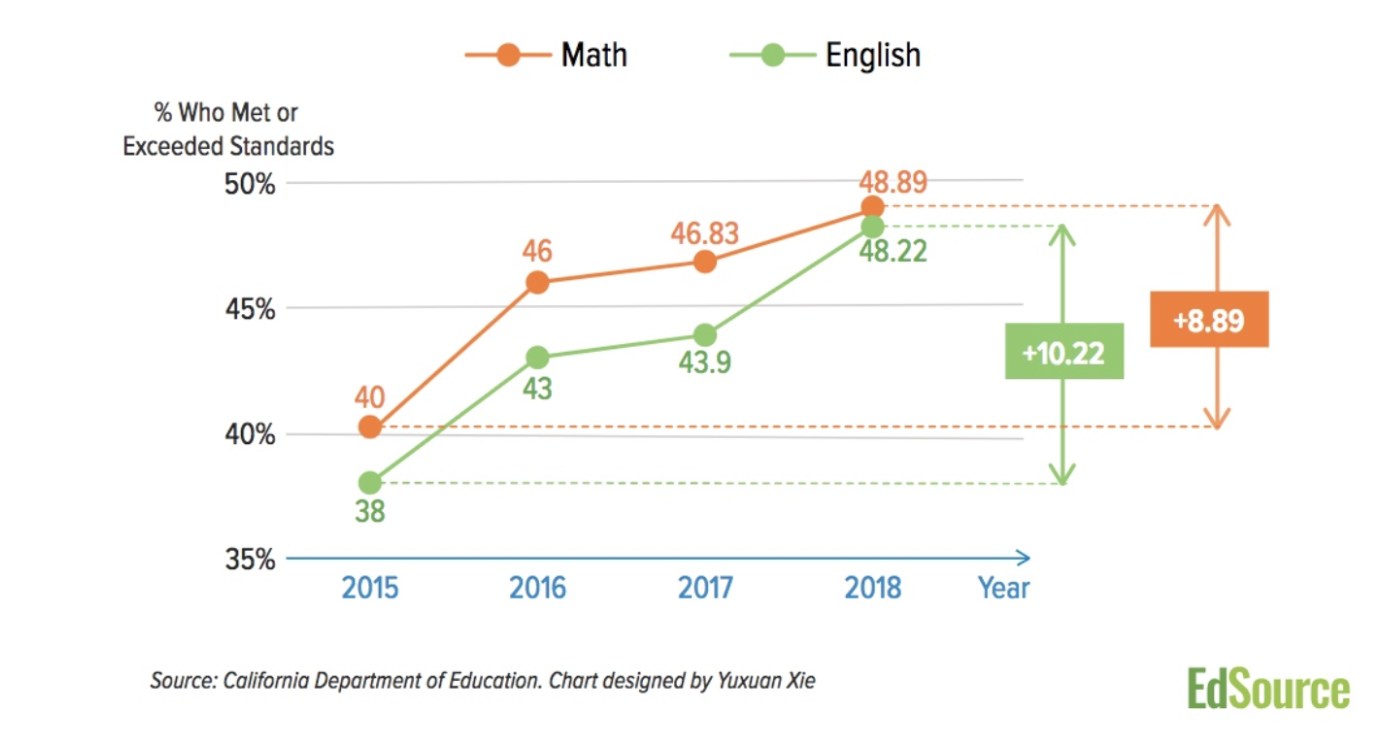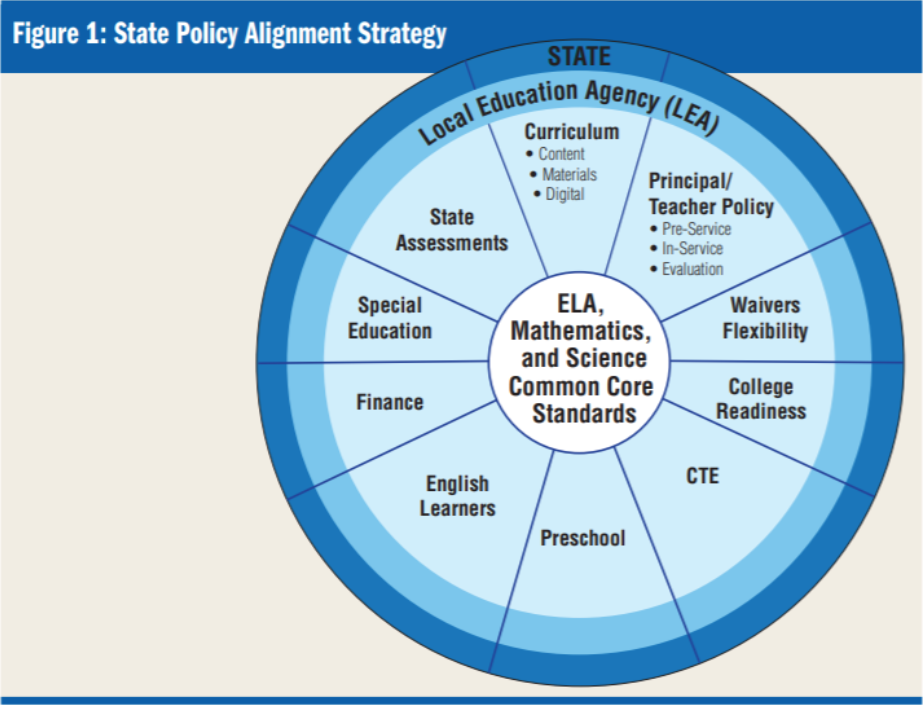 This commentary is inspired by the Spring 2020 Education Next forum, “A Decade On, Has Common Core Failed? Assessing the Impact of National Standards,” and it aims to reply to the negative view from Tom Loveless in particular (“Common Core Has Not Worked”) about the effects of Common Core.
This commentary is inspired by the Spring 2020 Education Next forum, “A Decade On, Has Common Core Failed? Assessing the Impact of National Standards,” and it aims to reply to the negative view from Tom Loveless in particular (“Common Core Has Not Worked”) about the effects of Common Core.
My comments focus on California, a state that never substantially revised Common Core and uses the Common Core-aligned assessment Smarter Balanced (although Covid-19 now has halted 2019-20 in-person classroom instruction in most parts of state and end-of-year testing throughout California). I address three issues: the shortcomings of the National Assessment of Educational Progress as a tool to measure achievement for Common Core; English language arts and math achievement trends in California; and how long it has been since California implemented Common Core.
Is NAEP the Best Measure for Common Core Academic Progress?
California uses the Smarter Balanced computer adaptive assessment that includes extended responses where students must defend their answers and complete an hour-long performance exam that requires evaluating evidence and solving a problem. These components are not part of NAEP. Moreover, there are several issues concerning the alignment between NAEP and Smarter Balanced that have long been highlighted by experts.
American Institutes for Research convened an expert panel to consider math alignment issues explicitly. The experts found 79 percent of NAEP items in 4th grade math assessed content included in the Common Core state standards at grade 4 or below. However, the match rate was lower in some areas: 47 percent for data analysis, statistics, and probability, 62 percent for algebra and 68 percent for geometry.
In the 8th grade, 42 percent of the Common Core standards for grades 6, 7 and 8 were not being tested by any items in the 2015 NAEP item pool, the experts found. Most of the differences reflected the intent of Common Core standards to shift instruction in certain topics to later grades. “The Common Core standards are more focused than previous standards in their attempt to create a coherent progression in mathematics instruction from elementary to high school,” said Fran Stancavage, a managing researcher at AIR and co-author of their 2015 report.
“We are at a time in education when teachers, administrators and students are grappling with the changes brought about by many states’ move to new, more rigorous standards that will prepare our students for college and work,” said George Bohrnstedt, an AIR Institute Fellow and chairman of NAEP Validity Studies’ expert panel. “The NVS study results suggest that as those standards are implemented, NAEP needs to ensure that it continues to be well-aligned with the mathematical content being taught in the nation’s classrooms.”
A similar study by Achieve entitled “Is NAEP math out of step with the States?” pinpointed misalignments in the NAEP framework and what math educators are expected to teach. The authors called on the NAEP Governing Board to review and revise the math framework.
Responding to these concerns and after a thorough review of state standards and local practices, the NAEP Governing Board did unanimously approve updates to the math framework in 2019. That move was applauded by many, including the Council of the Great City Schools.
These changes are guiding development of the 2025 NAEP. That is a step in the right direction; the last time the math framework was updated was 2006. Nevertheless, future reviews of the progress and impact of Common Core in California certainly should consider alignment of NAEP with the standards-based instruction underway.
California English Language Arts and Math Scores Increase and Other Benefits of the Common Core
From 2015 to 2019 the percentage of California 3rd graders meeting or exceeding standards in English Language Arts and mathematics increased. In both subjects, 3rd graders meeting or exceeding standards increased 10 percent, in English Language Arts to 49 percent from 39 percent, and in math to 50 percent from 40 percent.
A professor emeritus at the Stanford Graduate School of Education and a specialist in assessment, Edward Haertel, wrote in an email to EdSource that nearly double-digit four-year gains in 3rd and 4th grades are particularly encouraging. These students were instructed in the Common Core standards in math and reading since they started school, Haertel explained, and they benefited from the training their teachers received. The switch to Common Core happened after many middle and high school students were past the early grades. That our younger learners who have experienced standard-aligned instruction since kindergarten are improving faster is encouraging.
Support for Common Core among California practitioners also has increased. More than twice as many California teachers and principals agreed than disagreed in surveys conducted by West Ed in both 2016 and 2017 that California’s current standards are more rigorous than previous standards, that the standards make learning more relevant to students’ everyday lives, and that the standards will have a positive impact on the degree to which students are prepared for college and careers.
Common Core Implementation Is Taking Hold and Improving in California
The notions that Common Core has had 10 years of implementation in states and that we should give up on it are wrong. In California implementation did not start in 2010 because the deep 2008 recession caused statewide school district budget cuts and educational dollars were spent restoring services. Moreover, additional time was needed to devise and align new state policies. California state officials spent several years after 2011 passing integrated new policies (see State Policy Alignment Strategy, Figure 1 below).
One important step was the state’s 2014 response to the field’s demand for new mathematics instructional materials aligned to the Common Core, since the last adoption for mathematics materials took place in 2007. Events that take California two years to complete in a typical instructional materials adoption were compressed into approximately one calendar year, to help bridge the gap between outdated materials in the field and supplemental materials aligned to Common Core available to districts for school year 2014-15.
The State Board of Education then adopted the English Language Arts/English Language Development Framework in July 2014 and a list of programs in November 2015; it adopted the science curriculum framework in November 2016 and adopted the program list in November 2018; and is scheduled to take action on a revised math curriculum framework in early 2021 (and programs thereafter).
In this fluid environment, when California teachers were asked in surveys to identify their top needs to implement the standards effectively in classrooms, the teachers from 2016 to 2018 consistently ranked as their top need “higher quality textbooks, curricula, and/or instructional materials that align with the California Academic Standards.” There is some evidence that this is changing, however. Although standard-aligned materials were consistently teachers’ top-ranked need, over the years from 2016 to 2018, lower proportions of teacher respondents cited the need for standard-aligned materials, indicating a dynamic materials market.
In recent years, given varying adoption timelines, California teachers have commonly had to rely on peer-developed materials, often procured online. More recent interviews with district leaders across the state have suggested that districts are now shifting towards more centralized procurement or development of materials, and moving away from teacher-created materials. And from 2016 to 2018, higher proportions of California teachers reported (on separate WestEd survey questions) that curriculum, instruction, and learning materials are well coordinated across the different grade levels at their school, and that there is consistency in curriculum, instruction, and learning materials among teachers in the same grade level at their school.
Teachers are learning together in new ways, with instruction gradually shifting. In this environment, materials-focused professional learning has also varied across California. California teachers reported less frequent professional learning focused on adapting their instructional materials to student needs than did teachers in other states in 2017-18. Also, WestEd’s survey results from 2015 to 2017 indicated that increasing proportions of California teachers are emphasizing having students explain their reasoning, construct arguments supported with evidence, consider real-world applications, and build on each other’s ideas during discussion.
To give up as Loveless suggests would be self-defeating at this juncture. Instead, it is time to recognize that Common Core implementation is still evolving and improving in California, and to stay the course. 2010 is too early to be the starting point for any final judgment of Common Core impact. Attempting such a final judgment at present risks spoiling the outcome. It would be like pulling a new plant out by the roots to see if it is growing. A better approach is to adopt the California strategy of patience, persistence, humility, and continuous improvement.
Michael W. Kirst is professor emeritus at Stanford University. He served on the California State Board of Education from 1975 to 1982 and from 2011 until 2019, including 13 years as president.
get headlines https://thecherrycreeknews.com


No comments:
Post a Comment